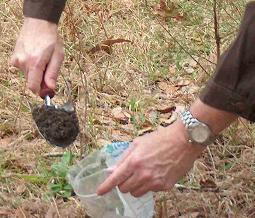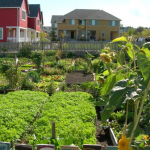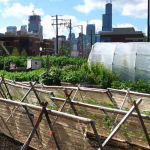2br, 2b, a/c, good soil
You are viewing a house to buy. You take notes, you take photos,
and you take soil samples from the back yard.
 Soil samples? Yes – for a vegetable garden.
Soil samples? Yes – for a vegetable garden.
Many of us have absolutely no intention of growing vegetables in the back yard.
But that’s today. Look ahead a little and you may see at least three good reasons to harvest your own carrots, tomatoes, salad greens, zucchini, and onions.
We can save money growing some of our own food. Like hundreds, even thousands of dollars a year.
We can dodge some of the price increase and shortages predicted if the price of transport fuel goes up significantly, if water becomes increasingly scarce in the big farming regions out west, and if industrial farms can no longer get cheap energy for tractors, processing machinery, and freezers.
And, of course, it tastes better than the stuff we get at the supermarket.
If some day your family budget yells at you to grow some of your own food, it would be an expensive discovery to find your back yard is dangerous to plant life. Examining and testing the soil covers:
pH value. Although some vegetables prefer acid soil and a few prefer alkaline, it’s best to start near neutral and doctor the soil for each group of plants.
Nutrients like nitrogen, phosphorus, potash, iron.
Soil structure, including particle size analysis, bulk density, moisture content, macro and micro nutrients, and organic matter content.
Contaminants like salt. Or lead, which can be deposited in paint dust or under where a car used to be started each morning.
You can buy a do-it-yourself soil test kit, but unless you can interpret the results, you may not learn much. Better to send your samples to your state extension service (Google: extension soil YourState) or a private testing service (Google: soil test services).
Collecting soil samples the right way is important. Follow the instructions from your testing service.



